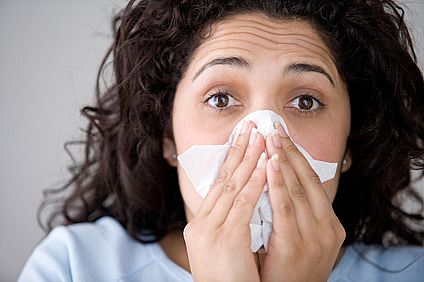Aromatherapy is not restricted for use only in aromatic or medicinal fields. It can be also be used for domestic purposes, right in the backyard of your kitchen. Kitchen aromatherapy includes use of essential oils for food recipes, making of body oils, aromatic wood polishes, soaps, cleaners, aromatic scents for cupboards, drawers etc. This article will throw light on aromatherapy recipes that can be made with kitchen/household items and can be used in domestic setups.
Domestic recipes using essential oils: These recipes are especially good for use with essential oils that have gone old and have no use for medicinal purposes. When the therapeutic is ruled out, all you can do with essential oils is the aromatic and the domestic. You can be as creative as possible to blend all kinds of aromas and get exotic recipes that can be used in your bath, as soaps, cleaners and room diffusers. Below are some recipes which you can use for household purposes:

1. Bathroom spray: Bathrooms are often the breeding place for several microbes, including virus and bacteria. To clean the bathroom air and keep it free from bacteria, virus and other fungi, you can try this recipe. To make the recipe, combine 5 drops of Cinnamon oil with 5 drops of Eucalyptus, 5 drops of Lemon, 5 drops of Sage, 5 drops of Thyme and 10 drops of Bergamot, 10 drops of Citronella, 10 drops of Lavender, 10 drops of Tea Tree. Shake well to mix all the oils and spray on to your bathroom space everyday.
2. Kitchen soap with coffee scent: If you think that your kitchen needs a kitchen-friendly aroma, here you go. Created by Kay, this Coffee scented essential oil kitchen soap will combine Lemon and soap to yield a coffee soap. Combine 5 drops of Coffee essential oil with 4 drops of Lemon oil and mix them both with 1 cup of unscented liquid soap. Transfer the mixture to a pump and you are done with the recipe.
3. Kitchen bench wipe: This is ideal for wiping up any sort of mess in your kitchen. You will need an old bottle to store this blend and also a spirit pourer. Wash the bottle thoroughly and add water to it. Then, pour 30 drops of your favorite Citrus oils. For best results, you can try a mixture of Grapefruit, Lemon, Petitgrain and other Citrus oils. Blend well and pour into the spirit pourer. Every time you need to clean up a mess, add a drop of this blend to your kitchen sponge/wipe and clean. This is both a disinfectant and a cleaner.
4. For aromatic cupboards and drawers: To make your cupboards smell fresh and lively, you can try this. Add a few drops of essential oils to a cotton wool and place them in cupboards and drawers. Lemongrass and Lavender work well to keep moths at bay.
5. Wood polish: To make wood polish to rub kitchen wood, combine 4 oz of Olive oil with ½ tsp of Lemon essential oil in a small bottle. Blend well and apply with a soft cloth and buff to shin. Olive cleans the dust in wood and makes it shine, while Lemon yields a fresh, aromatic smell.
6. Handbag scenting: If you have a foul-smelling handbag, this is your recipe. Add 3 drops of Bergamot, 2 drops of Geranium and 2 drops of Melissa in a cotton wool or tissue and place it inside your handbag. If there is a leather tag attached to your bags, you can use this to put the blend.
7. Focus blend: To gain focus, this blend will be of great help. Mix 10 drops of Peppermint, 10 drops of Rosemary and 10 drops of Lime essential oil. Mix everything with 3 oz spring water and use in a diffuser inside your study room or home office.








